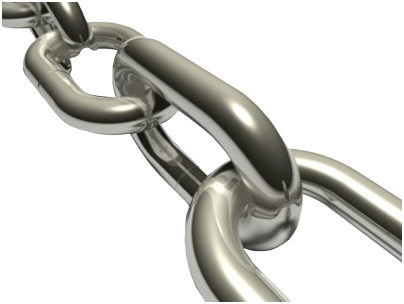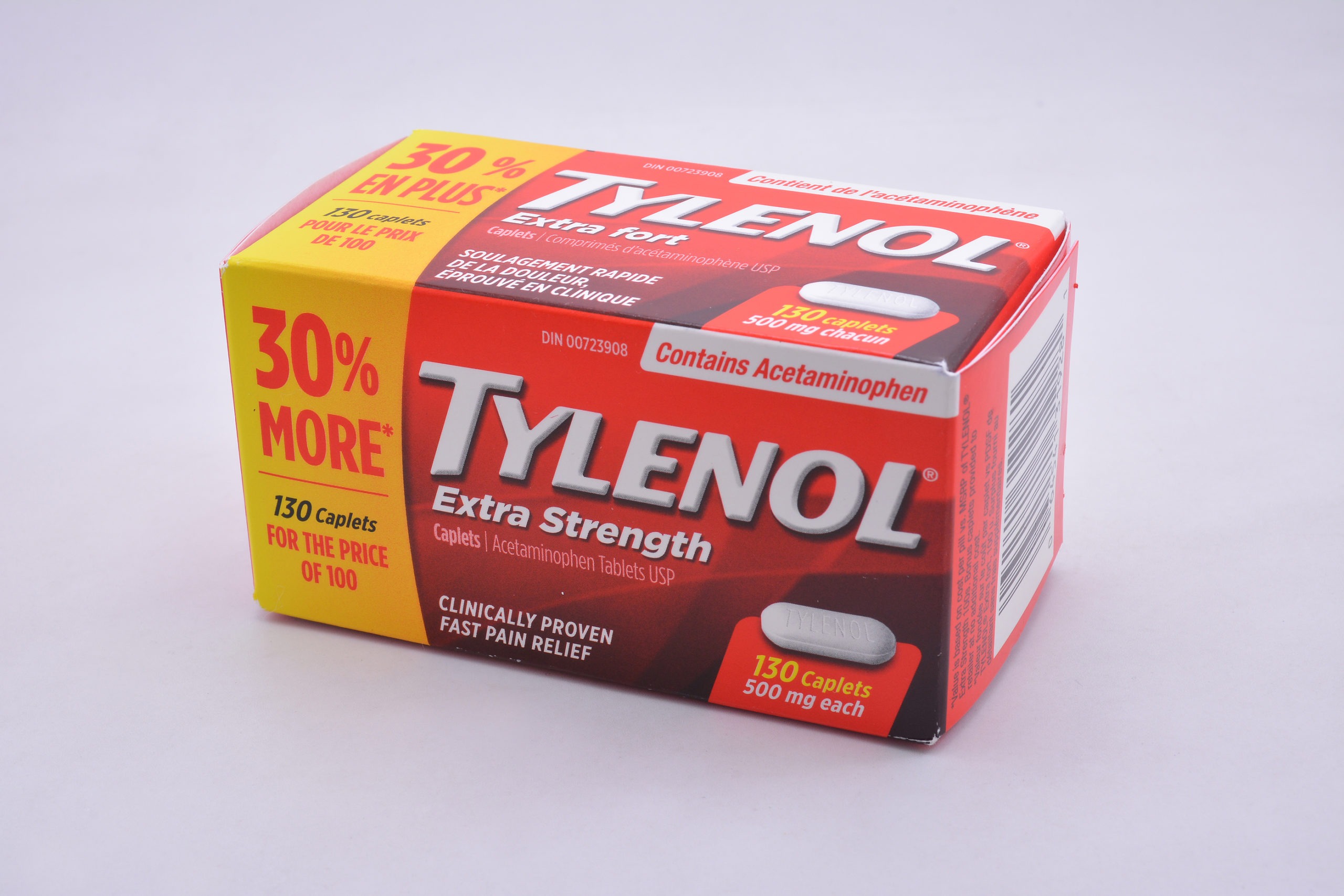When injured in a slip and fall, some people may be disillusioned into thinking that receiving compensation is a quick and easy process. Unfortunately, that is not the case.
In reality, a slip and fall victim, as a plaintiff, has a burden to meet before receiving adequate compensation for their injuries. It’s not as easy as just showing a crack in the pavement and some x-rays of your injuries to a judge or jury. You’ll need to prove causation, which could be a lengthy process. In other words, you will have to prove that the defendant’s actions were the proximate (or legal) cause of your injuries. This process is accomplished in 4 steps, which may be visualized as being links in a chain of causation.
Before we proceed with the four links of causation, let’s first define some of the terms that may appear, or may have already appeared, that you might need clarification on. This short definitional list may be helpful to understand other areas of personal injury also.
Definitions
Breach: A violation of a law, obligation, or promise; the act of failing to perform one’s agreement, breaking one’s word, or otherwise actively violating one’s duty to other.
Cause: something or someone that produces an effect, result, or condition.
Causation: the act or process of causing something.
Duty of Care: a requirement that a person act toward others and the public with the watchfulness, attention, caution and prudence that a reasonable person in the circumstances would use. If a person’s actions do not meet this standard of care, then the acts are considered negligent, and any damages resulting may be claimed in a lawsuit for negligence.
Hazard: The risk, danger, or probability that the event insured against may happen.
Accident: any unintended and unexpected occurrence which produces hurt or loss.
Injury: any harm done to a person by the acts or omissions of another.
Proximate Cause: an event sufficiently related to a legally recognizable injury recognized to be the cause of that injury.
Damages: the amount of money which a plaintiff may be awarded in a lawsuit.
There are many types of damages, some related to personal injury are:
Special damages are those which actually were caused by the injury and include medical and hospital bills, ambulance charges, loss of wages, property repair or replacement costs or loss of money due on a contract.
General damages, which are presumed to be a result of the defendant’s actions, but are subjective both in nature and determination of value of damages. These include pain and suffering, future problems and crippling effect of an injury, loss of ability to perform various acts, shortening of life span, mental anguish, loss of companionship, humiliation from scars, loss of anticipated business and other harm.
Exemplary (or punitive) damages, which combines punishment and the setting of public example. Exemplary damages may be awarded when the defendant acted in a malicious, violent, oppressive, fraudulent, wanton or grossly reckless way in causing the special and general damages to the plaintiff. Although often asked for, they are seldom awarded.
Nominal damages are those given when the actual harm is minor and an award is warranted under the circumstances.
Plaintiff: the person suing (usually the person who is hurt).
Defendant: the person being sued (usually the person who caused the injury and their insurance company).
The 4 Links of Causation
For the sake of clarity, let’s create a simple slip-and-fall scenario so we can exemplify each of the links.
Imagine there is a large, big-box store called Joe’s Supermart. It is a national chain of stores with at least one location in every major city. Each store has on staff about 100 employees during any given business hour. Joe’s Supermarket sells everything from cleaning supplies to home office, clothing to food. Now, let’s say that while stocking products, an employee places a damaged bottle of laundry detergent onto the shelf. Over the next few hours, a leak in the bottle begins to produce a puddle of detergent in the middle of the aisle. By the time you arrive to that aisle, the detergent has been on the ground for 3 hours. As you make your way down the aisle, you slip and fall. Your feet go flying out from under you and your hip is the first body part to make contact with the floor tile. You are sure you’re hurt. Just like you know you should, you file a report with the store while waiting on the ambulance to arrive. After imaging exams, you find out that you fractured your hip. You will needs months of care to rectify the injury, during which time you will be unable to work. There are also some personal activities that you will never be able to do again.
- The first link that must be established is a link between breach & hazard.
This is the main focus of most slip and fall injury lawsuits. Many actions, or failures to act, on the part of property owners could prove a link to your slip and fall injury. For example: Was there inadequate inspection or maintenance of the property? Was there failure to warn property occupants of a danger? Did the property owner create or maintain a condition that presented a danger? Was there a failure to inspect, detect, and/or correct a hazard(s)? Any of these actions could lead to a potential slip and fall.
Property owners have a duty of care (defined above), or in other words, a responsibility to people on their property to keep them safe by being watchful and prudent. This can take the shape of posting a sign warning you of danger or fixing a potential hazard as soon as they notice it.
Now let’s take our example of Joe’s Supermarket. In the example, Joe’s Supermarket had a responsibility to its customers and guests—what are called invitees—to keep the store clear of any hazards. In the example, the store is a national chain, has 100 employees in the store, and sells cleaning supplies. All these factors show that Joe’s had a duty of care and the ability to recognize a hazard. One can assume they are aware of potential slipping hazards from their national experience, and that at least 1 of the 100 employees had ample time to come across the spill within the 3 hours.
In the example the puddle is the hazard, because it has the potential to create an accident that leads to injury. So Joe’s Supermarket breached their duty of care which is linked to the hazard by leaving the detergent on the ground.
- The second link that must be established is a link between hazard & accident.
Just because there is a hazard on a premises does not mean it was a substantial contributing factor in all accidents. For example, a slippery step at the bottom of a staircase would not be a contributing factor in a fall that takes place at the top of the staircase. Likewise, a defective handrail may not be a factor in causing a fall if someone was using both hands to carry groceries up the stairs. To establish this link, experienced personal injury attorneys, like Dolman Law Group Accident Injury Lawyers, PA, often rely on the testimony of experts. For example, a customer who falls on a slippery floor might need expert testimony to show the fall was in fact consistent with someone falling under those circumstances.
In our example, the detergent was a hazard because it can be agreed upon that laundry detergent is slick and slippery. When your foot came into contact with the hazard, it is reasonable to assume that it would cause you to fall. The link between hazard and accident has been established.
- The third link that must be established is a link between accident & injury.
Mechanics of a fall are relatively simple to establish by relying on the testimony of the injured party and witnesses. Usually, medical records contain a narrative correlating accident and injury. Some cases are self-evident. For example, there is usually no issue regarding this link if an individual slips and falls, lands on his side, and suffers a broken hip. However, where there are no obvious connections, expert medical testimony may be needed to establish this link in the chain.
In the example, the accident (you falling and landing on your hip) is easily linked with the injury (your hip fracture as shown in the images).
- The fourth link that must be established is a link between injury & damages.
Lost wages and medical expenses, called special damages (defined above), can be proven by documents easily available, such as medical bills and pay stubs. General damages (above) are harder to prove. When judgment is mostly subjective, the link is more difficult to establish. Diaries, photographs, and videotapes can all be quite helpful in substantiating pain and suffering or that quality of life has been altered. Witnesses willing to testify to these changes are very helpful. Remember, if you fall, get the contact information from anyone who may have seen the occurrence, or those who have seen how a fall has affected your daily routine.
In our example, the link between the injury and damages is established quite simply. Without the injury you would not have an ambulance bill, medical bills, or had to miss work. Similarly, when seeking general damages, you would have to prove that the injury has affected your ability to do something you once loved to do, like riding horses with your grandchildren.
Dolman Law Group Accident Injury Lawyers, PA
Receiving the compensation you deserve after a debilitating injury is a complicated process, but you don’t have to go through it alone. The qualified attorneys at Dolman Law Group Accident Injury Lawyers, PA have years of experience helping slip and fall victims establish the causal links necessary to win their claim. If you or a loved one have been injured in a slip and fall, give us a call today at (727) 451-6900. We would be happy to discuss any potential claims at a no cost consultation.
Dolman Law Group Accident Injury Lawyers, PA
800 North Belcher Road
Clearwater, FL 33765
(727) 451-6900






